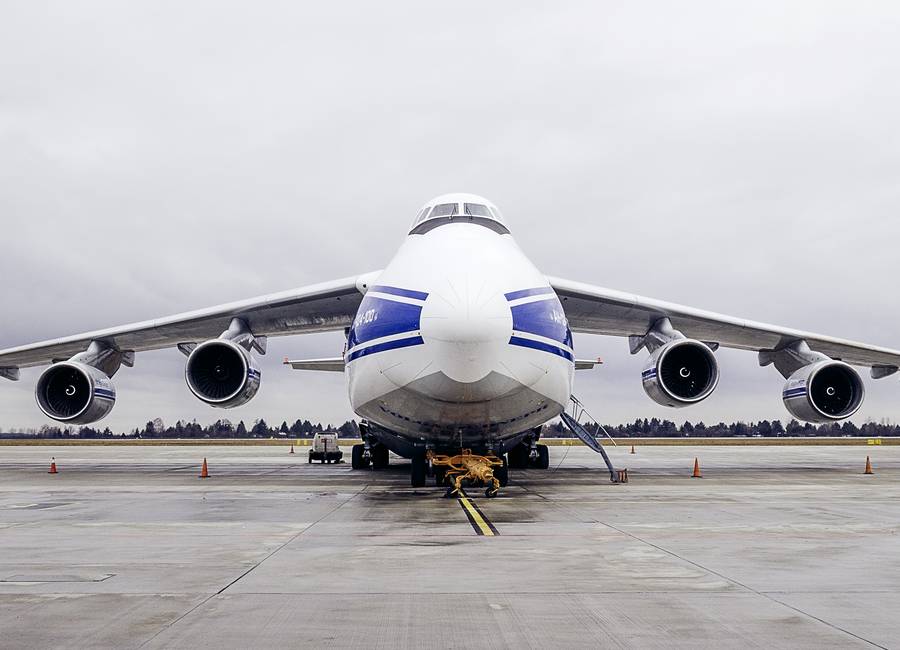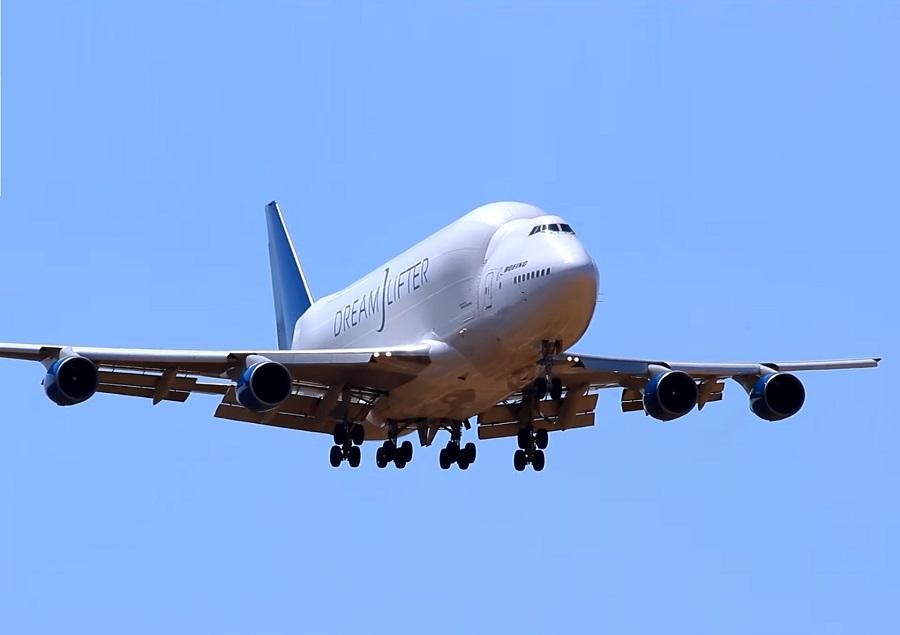It seems that Boeing uses a Russian company’s Antonov An-124s, to transport oversize aircraft structures. But can it work without them?
We have already explored the effects of sanctions on Russian aviation, set by governments on both sides of the Atlantic. These sanctions came after Russia’s attack and invasion of Ukraine. And while the effects for Russia’s airlines are devastating, they also affect companies in other countries. Airlines have to fly longer, as they avoid Russian airspace. But there are other, different effects from these sanctions.
That Boeing is contracting the use of Russian Antonov An-124s to carry parts, isn’t news. In 2019 there was a rather embarrassing incident, involving the damage of a GE9X engine, for the first 777X. Previous delays with the engines necessitated their transportation back to GE, for fixes. Two Antonov An-124s made this possible. They both belonged to Volga-Dnepr, a Russian cargo operator.
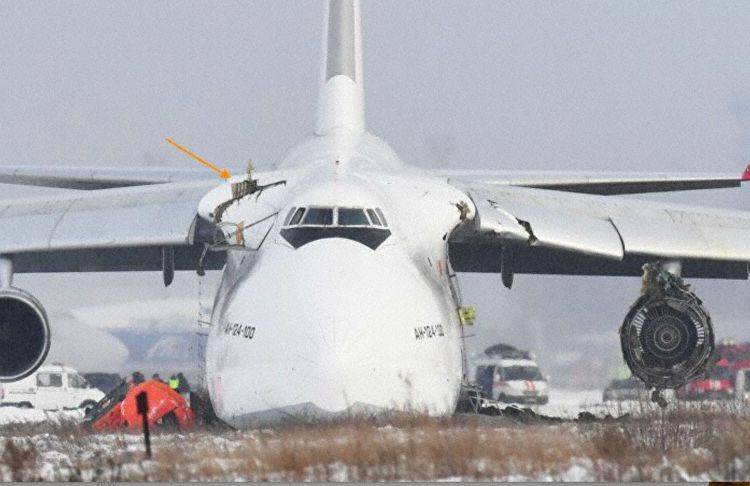
Boeing 767 Wing Boxes And Russian An-124s
But as it turns out, this use of Russian An-124s to carry key aircraft parts wasn’t a one-off for Boeing. New reports indicate that Boeing could be in some trouble at the moment, regarding the delivery of some parts. More specifically, Boeing regularly uses Volga-Dnepr’s aircraft, to carry 767 wing boxes. Boeing is sourcing these components from a supplier in Florida, shipping them to Everett, in Washington State.
Boeing developed its Dreamlifter fleet, to carry oversize 787 parts. But as we’ve previously mentioned, the manufacturer is also using Dreamlifters to carry some 767 parts, as well. But it now seems that Boeing is also relying on Russian An-124s. Production of passenger versions of the 767 may have stopped, but Boeing will keep making it for cargo use until 2027-28.
And of course, there is the KC-46, USAF’s new air refuelling tanker. That’s essentially a militarized 767, also coming out of the same line in Everett. So, how reliant is the 767 production on these transport arrangements? And could Boeing use Ukrainian An-124s, instead of Russian ones? The answer to both questions is unclear – for very different reasons. In February, Boeing and Volga-Dnepr planned for six flights, until the 4th of April.
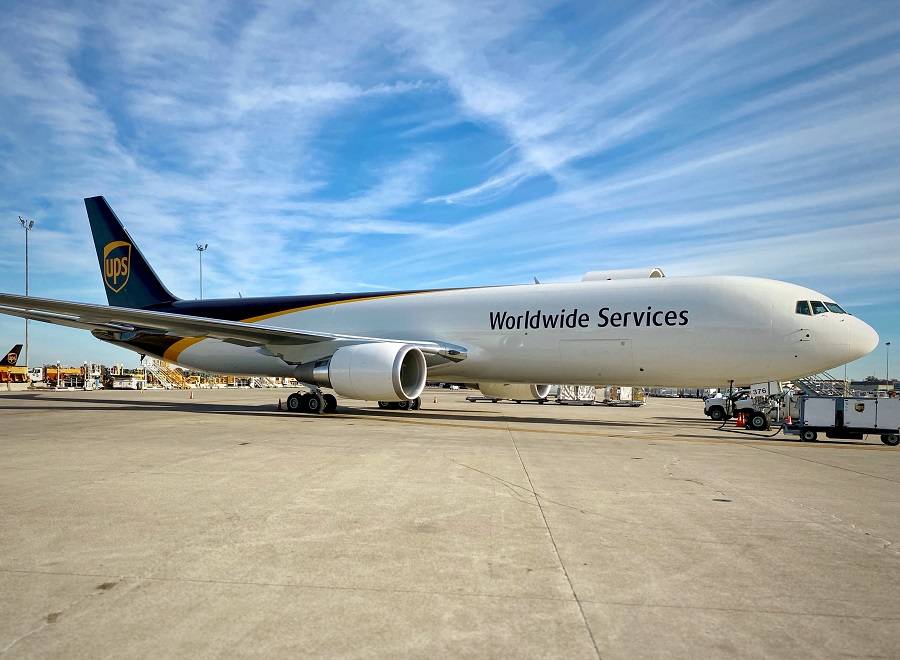
We saw that Boeing recently switched all 787 final assembly to its plant in South Carolina. Previously, only the largest 787-10 underwent final assembly there. Boeing’s stated motive for the move was streamlining the aircraft’s production. And while this isn’t going ahead smoothly (to put it mildly), it could mean a reduced need for Dreamlifters, for the 787 program.
Are Dreamlifters Available?
So perhaps Dreamlifters could replace Russian An-124s, to carry 767 parts for Boeing. Alternatively, Boeing could strike a relationship with Ukraine’s Antonov Airlines, which has its own An-124 fleet. Obviously, the Ukrainian company is currently trying to use its fleet for the urgent needs of its country and people. As we saw, the An-225 is destroyed – and two of Antonov’s An-124s are at the same airport, their fate unknown.
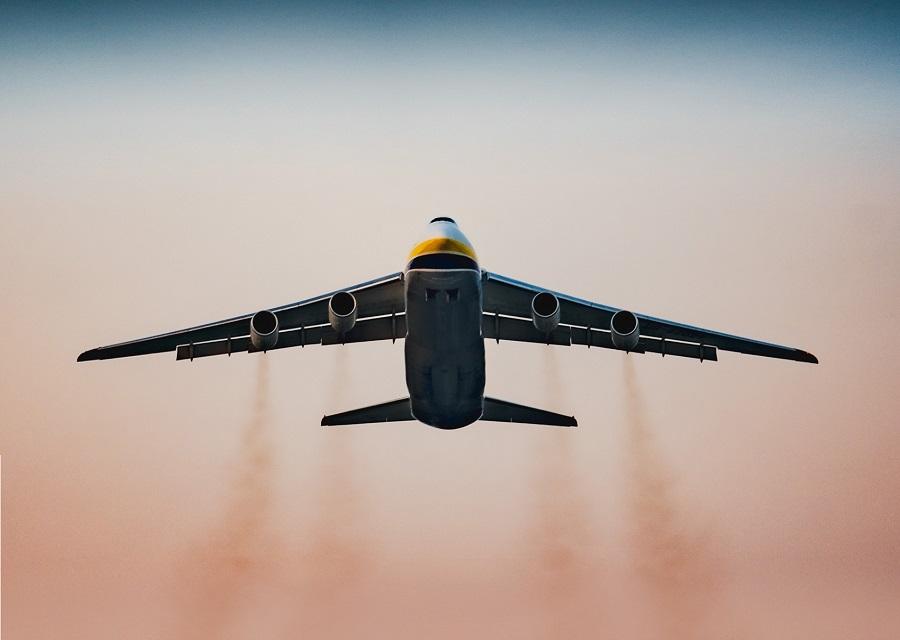
Russia’s Volga-Dnepr has 12 An-124s – at least one of which is in Canada, unable to return home due to sanctions. Ukraine’s Antonov Airlines has seven of the planes, including the above-mentioned two in Gostomel Airport (UKKM). Until now, Boeing had a working relationship with Russian company Volga-Dnepr, which included the use of its An-124s. The Volga-Dnepr group also includes AirBridgeCargo, an all-Boeing cargo operator, with 17 747s and a single 777F.
It is unclear if Boeing has any immediate alternative transportation options, allowing it to continue 767/KC-46 production. Antonov Airlines will obviously have far bigger priorities over the next few weeks. Boeing has faced production and development difficulties with its 787 and 777X programs respectively. And of course, there was the MAX, before either of them. Boeing really doesn’t need another headache in the 767. The KC-46 has had its own issues, mostly relating to installed equipment.

